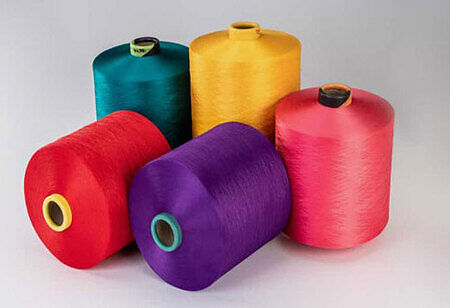
Can Nigeria’s New Industry Policies Uplift the Country's Textile Industry?


Sustainable and ethical fashion is becoming increasingly popular worldwide. It isn't easy to comprehend what sustainable fashion truly is. However, the general idea is that sustainable fashion is the measure to support a change in fashion goods and the fashion systems to uplift ecological integrity and social justice. It is a method of designing, manufacturing, and supplying sustainable outfits with maximum benefit to the ethical clothing company while having little impact on the ecological cycle. Sustainable and ethical fashion builds two different viewpoints to coexist and results in saving our environment while also driving massive corporate growth. As the trends become famous, the demand for the products also increases.
Raw Materials Supply
Cotton is considered the queen of the textile industry due to its superior properties, such as high strength, absorption, and color retention. The market accounted for more than 39 percent of the global textile revenue in 2021. China, India, and the U.S. are the major producers of cotton and cotton-based products worldwide.
According to reports of 2021, Chemical-based textiles are estimated to account for 97,075.9 kilotons as they play a crucial role in the entire textile manufacturing industry. Even Though the chemical reagents are hazardous to human health and the environment, they are extensively used as mercerizing agents, neutralizers, leveling agents, binders, thickeners, and stain-removers in the textile industry. According to 2021 revenue, wool-based textiles accounted for 13.3 percent of the market.
The wool comprises hydrogen, carbon, sulfur, and nitrogen and is highly used to manufacture insulation products such as winter wear, blankets, carpeting, upholstery, and others. Moreover, the products made from the same are used to absorb odor and noise in heavy machinery, thereby contributing to the growth of the technical application segment. The major raw materials used in the textile industry are silk, minerals such as glass fibers and asbestos, and other synthetic material. Silk finds extensive use in the manufacturing of clothing, surgical suture, parachutes, silk comforter, and various others.
Why is Nigeria's Textile Industry Left Behind?
The demand for clothes such as uniforms for school children and military and police personnel is ever-increasing. One of the countries suffering from this demand is Nigeria, despite the textile industry being the largest employer of labor in the country after the public sector.
The main reason the textile industry in Nigeria is left behind is the infrastructural deficits and cheap imports from Asia and other parts of the world. There has been swelling demand for fabrics that can be used as uniforms for school children, military and police personnel, as well as officials of paramilitary organizations across the country. As the fabric demand increases, textile companies all over the country are influencing a high demand for raw materials. However, instead of the growing demand for textile materials, it is shown that no deliberate policy backed by the political revival of the moribund companies, including the United Nigerian Textile Limited (UNTL) in Kaduna, the biggest in the country and the third biggest in Africa after Egypt and South Africa.
Before UNTL's downfall, the Nigerian economy has seen an influx of foreign clothing materials from China, India, and Turkey, among others, to meet the country’s need for clothing, especially uniforms for schools, police, military, and paramilitary organizations. In the broad spectrum, the growing demand for fabrics guarantees that the textile companies in the country, if revamped, would not scramble for the market for their finished products as the country has an overwhelming need for textile materials.
Textile Industry at Present in Nigeria and Factors Influencing the Market growth
Nigeria imports raw materials rather than exporting. For instance, between 2018 and 2021, Nigeria imported textile products amounting to N279 billion, which is about $ 671.8 million. The market growth compared to other years is a considerable increase. In the face of these challenges, observers sob as there have been no policies initiated by the government with genuine interest to revamp this sector in the past 20 years, except for their usual policies without political will. Their policies towards this sector were sometimes a conduit for corruption.
At present, in Nigeria, only a few textile organizations are active. Still, according to the statistics provided by the government, only seven textile companies are functioning below maximum capacity compared to what was obtained in the past.
A lot needs to be done to salvage the situation. The government disbursing the loan of N100 billion and the new N255 billion investments in the textile sector to restore the business are admirable, but simply injecting billions of naira into the textile revival fund will not be enough to revive the country's collapsing textile industry.
Factors Impacting the Change
We need to think about the change in the trends in the fashion industry by keeping the principles of sustainability to truly turn fashion into a dignified industry. Sustainability is not a trend, but it must be central to the business model and, by extension, a pillar of supply chain ethos, embracing corporate social responsibility and ethics into its core tenets. Brands should invest in their supply chains, pay their workers more, and assume some of the risks that they force suppliers to bear. Brands must move away from their exponential linear growth models. Instead, they must adopt circular business models, apply regenerative practices, slow down the production cycle, and produce far less but better.